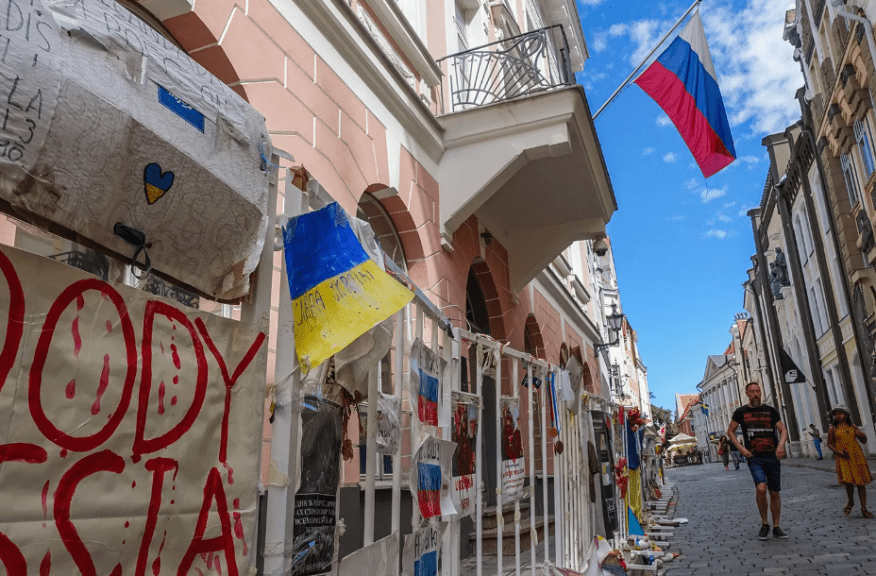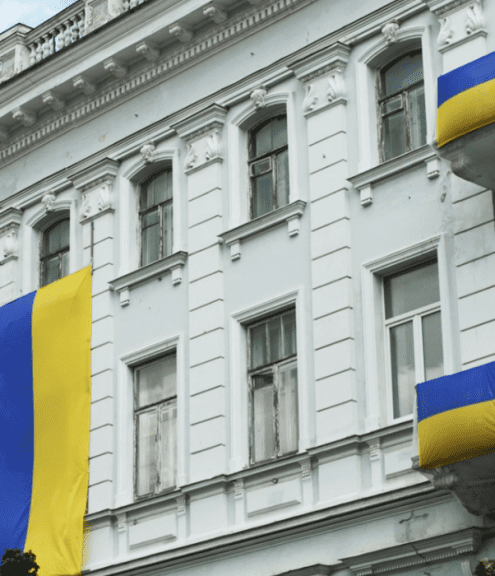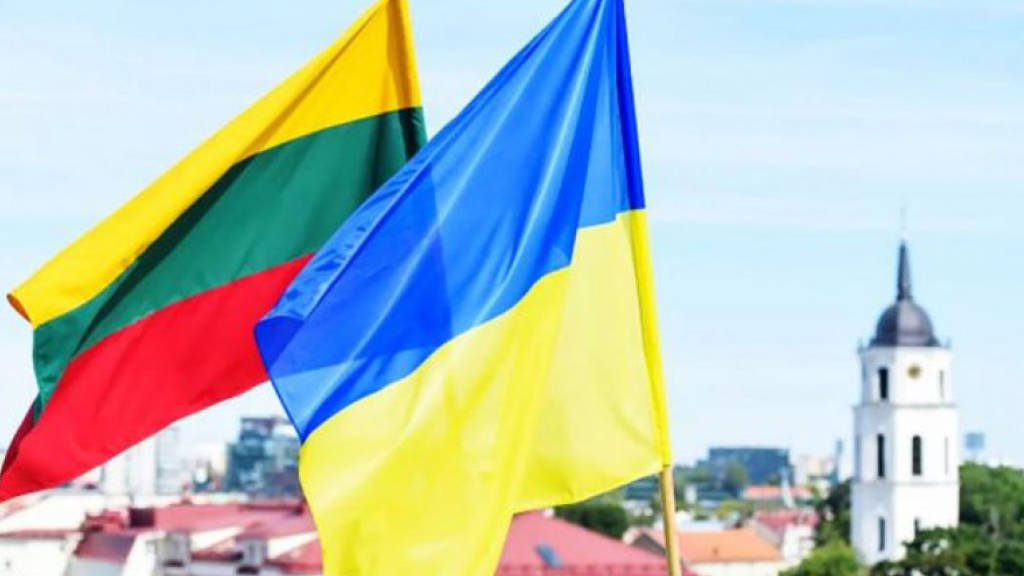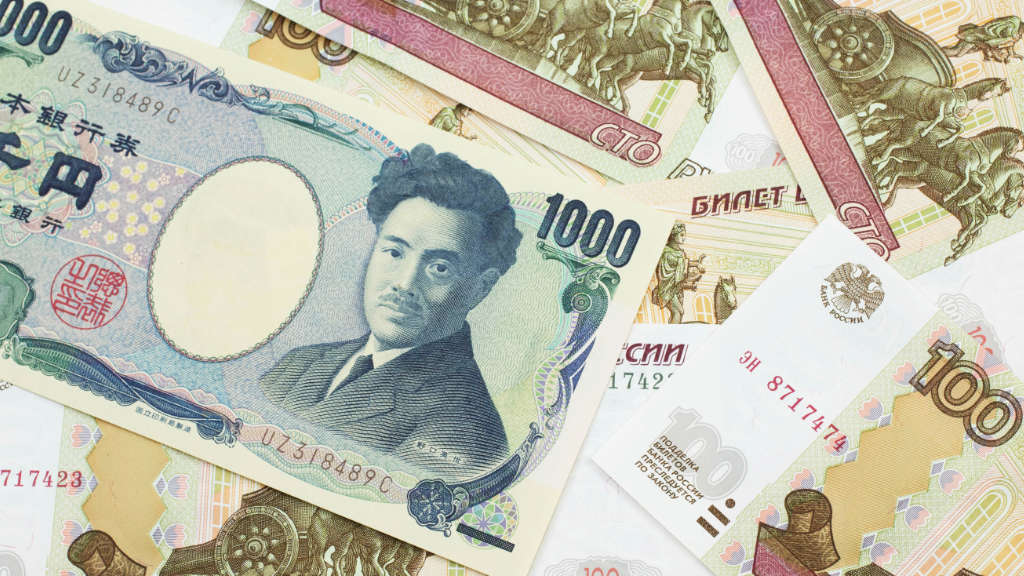Russia’s Pivot to Asia has recently visited Estonia and Lithuania, both splendid nations with plenty of history, with the latter once being a proto-empire, stretching from the Baltic to the Black Seas. Historically, both had more Germanic influence over the centuries, as traders and barons came and went and possessed and repossessed lands. In more recent times, both were part of first the Russian Empire, then became part of the USSR, then temporarily occupied by Nazi Germany during World War II, and subsequently, upon the collapse of the USSR, part of the European Union in May of 2004. Both possess a long and only occasionally brutal history. Much of their historical background has been concentrated on preserving their unique identities amongst rather stronger neighbors.
On arriving in Estonia by air—as has been the case now for several years—one is greeted by a giant Ukrainian flag. Such flags are displayed all over the capital city, Tallinn, as are some rather lurid, bloody images of children’s dolls and exhibits of ‘martyrs’ on display outside the Russian Embassy. Obscene, anti-Russian graffiti is displayed on the often crumbling old plaster walls of buildings. Tallinn, a medieval, European architectural gem, is being allowed to become shabby in the name of anti-Russian propaganda.

While Lithuania’s Vilnius doesn’t have quite the sense of decay of Tallinn, what is noticeable is the display of Ukrainian flags, which far outnumber the Lithuanian sovereign state flag. Additionally, Lithuanian national cultural monuments appear to favor Ukrainian nationals, who may visit free of charge, a privilege only extended to Lithuanians under 12 and over 80. Given that Lithuania also pays for numerous Ukrainians to live there, the Lithuanians have some justification for feeling somewhat exploited—and some do, as we found out when we posted a feature on X (Twitter) noting the trend towards promoting Ukrainian sovereignty over Lithuania’s in Vilnius and targeting those observations at a specific Lithuanian readership.
The response was immediate, with over 200 comments posted in five days in reply to our question whether this meant a suppression of Lithuanian identity in favor of Ukraine’s.

The interesting point was the nature of most of the replies: while some agreed the situation was absurd and had gone too far, the vast majority were explicitly rude and used highly coarse language. Hardly any bothered to debate the issue; they were instead filled with vulgarity and hatred that we had dared to point the issue out. Very few addressed the real core issue. Clearly, any perceived questions about Ukraine are coming at the expense of other nations national identity.
Unfortunately, Lithuania doesn’t rank especially high in terms of friendliness towards visitors, with best-citizenships.com ranking it the third worst in the EU. That certainly seemed the case in the angry response to the question, “Why are there far more Ukrainian flags in Vilnius than Lithuanian?”
However, although the question was far from popular, it does raise several other key questions as well. Not least of these is the extent of Ukrainian culture—and sovereignty now taking over traditional Baltic identities? Others include the issue of whether the Ukrainian flag has now become the symbol of Russophobia as opposed to a sovereign symbol, and the very essence of what it means to be a contemporary Lithuanian (or Estonian) national when specific foreigners (Ukrainians) are treated better than the locals.
We suggested that foreign symbolism perhaps should be regulated in some way to allow national identities some dominance, but this too was shouted down. Ukrainian flags on display in Vilnius are apparently more important than the need to display the Lithuanian one. To our mind, this is unprecedented. It appears to be a cultural sovereignty takeover by stealth.
The pro-Ukrainian diaspora will dismiss these observations as purely pro-Russian propaganda, but in fact there is a more serious point: is the overly promotional campaign for pro-Ukrainian policies actually diminishing smaller sovereign European nations identities? Are Ukrainian policies and attitudes now permeating the European Union (of which Ukraine is not a member)?
The answers seem to be in the positive. What Ukraine wants and demands – often rather thuggishly – is generally approved and sent off to Ukraine—apparently without much supervision. Weapons are turning up on black markets. Huge sums of money cannot be accounted for. Yet the EU, if these allegations are later proven correct, is complicit. Without any checks and balances in place – surely European values – it appears to have been funding terrorists and criminals. Any sign of Ukraine being questioned is met with immediate condemnation. Europe, it appears, is being bullied into compliance to do what a non-member state wants and not what is necessarily good for Europe. In which case, the Lithuanian flag issue reveals itself to be symbolic of a greater malaise: how Ukrainian should democratic Europe actually be?
Russia’s Pivot to Asia would prefer to see Lithuanian flags fly above Vilnius, not for any dismissal of Ukraine’s problems, but to showcase that Vilnius is a Lithuanian city and retains Lithuanian sovereignty and culture, and not those imported from an entirely different nation with an entirely different history, culture, and identity. The European Union would also be wise to consider its position within these issues to debate as well. Is it the intent of the EU to be European, with European values, or Ukrainian, with Ukrainian values?
It has come to our attention that there are at least 33,000 Ukrainian flags on display in Vilnius. Details here






